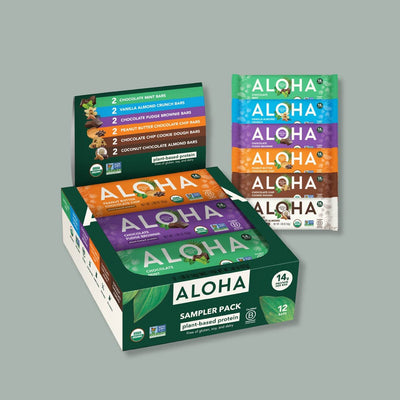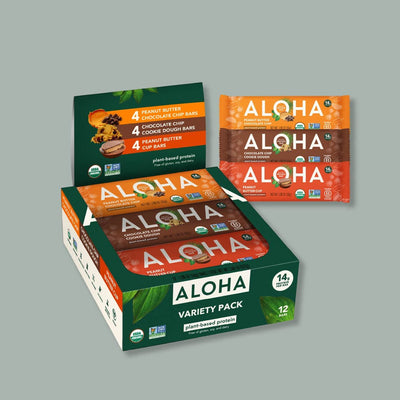Key Takeaways:
- Taro Is Naturally Plant-Based and Versatile: Taro root is a whole-food ingredient with a neutral taste that works well in both sweet and savory recipes. It fits seamlessly into plant-based meals and snacks.
- Cultural and Ecological Value Matters: Grown sustainably in Hawai‘i, taro supports both biodiversity and tradition. Its cultivation reflects a deep-rooted respect for nature and heritage.
- A Thoughtful Addition to Conscious Eating: Taro provides gentle energy, natural fiber, and subtle nutrients. It's a quiet, steady ingredient that supports variety in a balanced lifestyle.
Can a starchy root grown in the wetlands of Hawai‘i be more than just a traditional ingredient — perhaps even a quiet hero in today’s plant-based world? Taro root has a long-standing role in many cultures, especially across the Pacific, where it’s valued not only for its subtle flavor and creamy texture but also for its meaning. As modern eaters look for whole, nourishing options, the question naturally arises: is taro good for you?
At ALOHA, we’re proud to blend past wisdom with today's values. As a certified B Corporation and a leader in plant-based nutrition, we take pride in offering thoughtfully crafted products that go beyond trends. Our special edition Taro Bar is a celebration of tradition, sustainability, and the rich flavors of Hawai‘i — all in a convenient, nutrient-dense snack.
In this piece, we’ll look closer at taro root — its origins, nutritional value, and how it fits into a conscious, plant-based lifestyle. Let’s find out if this earthy root deserves a spot in your daily routine.
What Is Taro Root?
Taro root, also known as Colocasia esculenta, is a starchy tuber cultivated for thousands of years — especially in tropical regions like Southeast Asia, the Pacific Islands, and parts of Africa and the Caribbean. With its brown, fibrous skin and pale interior that turns purple when cooked, taro is versatile and visually striking.
In Hawai‘i, taro holds deep cultural and spiritual importance. It’s traditionally grown in lo‘i — wetland fields that reflect a close, reciprocal relationship with nature. Here, taro isn’t just food. It’s part of the story, the land, and the community.
Once cooked, the taro's texture is smooth and creamy, making it a natural fit for sweet and savory dishes. Whether steamed, mashed, or baked into modern creations like plant-based bars, taro’s mellow, nutty flavor continues to make it a comforting and adaptable ingredient across generations.
Nutritional Profile Of Taro Root
Taro root may not be flashy, but its nutritional makeup makes it a solid choice for anyone seeking whole, plant-based ingredients. It offers a unique balance of energy, fiber, and essential minerals — all packaged in a creamy, comforting texture. Here’s a closer look at what’s inside:
- Complex Carbohydrates for Steady Energy: Taro is naturally rich in complex carbohydrates, which provide a gradual release of energy. This makes it a smart option for those looking to fuel their day without the spikes and crashes that can come from more refined carbs.
- A Source of Fiber That Supports Digestion: While taro isn’t the highest-fiber root vegetable, it does contribute a meaningful amount — especially when eaten in less processed forms. Its fiber content plays a role in supporting digestive balance and promoting overall gut wellness.
- Potassium and Magnesium in Modest Amounts: Taro contains small amounts of minerals like potassium and magnesium, which are essential for maintaining hydration and muscle function. Though it’s not a mineral powerhouse, it adds to your daily intake in a gentle, natural way.
- Vitamin E and Other Antioxidants: Some varieties of taro contain traces of vitamin E and antioxidant compounds. These nutrients support the body’s natural defense system and contribute to taro’s value as a plant-based food rooted in tradition.
How Taro Fits Into A Plant-Based Lifestyle
In a plant-based world, variety matters. From grain bowls to baked goods, finding new whole-food ingredients that feel nourishing and familiar can make everyday meals more satisfying. Here’s how taro comfortably earns its spot in a modern, plant-forward kitchen:
A Naturally Plant-Based Staple
Taro is a root vegetable that grows straight from the earth — no processing, no additives, just whole food in its original form. It’s naturally free from animal products, making it a perfect addition to vegan and vegetarian dishes without substitutions or special preparations.
Comforting And Versatile In The Kitchen
With its smooth, creamy texture and slightly sweet flavor, taro works well in sweet and savory meals. It can be mashed like potatoes, steamed and served with greens, or baked into desserts and snacks. This flexibility keeps plant-based eating fun and approachable, especially for those exploring new ingredients.
Easy To Pair With Other Whole Foods
Because of its mild taste, taro pairs well with various ingredients—from leafy greens and legumes to tropical fruits and nuts. It blends seamlessly, whether used in traditional recipes or added to modern dishes like smoothies or protein bars.
Cultural Significance And Sustainable Farming Of Taro
Taro isn't just a root crop — it's a symbol of connection between land, people, and tradition. In many communities, especially across the Pacific Islands, taro holds a cultural value beyond nutrition. Here’s why this plant carries such deep meaning and how its cultivation respects both heritage and the environment:
Rooted In Hawaiian Tradition
In Hawai‘i, taro is known as kalo and plays a central role in native Hawaiian culture and identity. According to traditional beliefs, the kalo is considered an ancestral plant connecting people to the land and each other. It's been grown in Hawai‘i for centuries using methods passed down through generations — not just as food but as a way of life.
Grown In Harmony With Nature
Taro is traditionally cultivated in lo‘i, or irrigated terraces, often in valleys nourished by natural mountain streams. These fields aren’t just functional — they’re sustainable. The system conserves water, maintains soil health, and supports surrounding biodiversity. It’s a farming approach that prioritizes the long-term health of the land.
A Living Example Of Ecological Wisdom
The way taro is grown reflects a deep respect for nature and an understanding of balance. It’s more than organic — it’s symbiotic. This ecological wisdom is becoming increasingly relevant in today’s conversations about regenerative agriculture and sustainable food systems.
Ways To Enjoy Taro Root
Taro’s creamy texture and mellow flavor make it a favorite across many cuisines — and it’s surprisingly easy to work with at home or enjoy in ready-made snacks. Whether you’re a seasoned cook or prefer grab-and-go options, taro offers something for every lifestyle. Here are a few simple ways to incorporate it:
- Cooked and Mashed: One of the most traditional ways to enjoy taro is by steaming or boiling the root and then mashing it—similar to how you’d prepare potatoes. It’s comforting and slightly sweet, and it's often served alongside greens, tofu, or other vegetables in island-inspired meals.
- Baked or Roasted: Sliced into wedges and roasted, taro takes on a crispy exterior and a soft, fluffy center. It’s a great side dish or snack, especially when seasoned with just a pinch of sea salt or herbs.
- In Smoothies and Baked Goods: Taro is often used in desserts and drinks, particularly in Asian cuisine. Its natural sweetness and purple hue (depending on the variety) make it a fun ingredient in smoothies, puddings, or muffins.
- On-the-Go Snacks Like Taro Bars: For those looking for convenience, taro has made its way into modern plant-based snacks — like our ALOHA Taro Bar. It’s a thoughtful way to enjoy the benefits and flavor of taro without needing to prep it yourself.
- Turned Into Poi: Poi is a traditional Hawaiian dish made by pounding cooked taro root and mixing it with water to create a smooth, sticky consistency. It’s simple, nourishing, and often a staple in Hawaiian meals. While it might be new to some, poi reflects taro’s cultural roots and is still enjoyed today for its history and flavor.
Is Taro Root A Healthy Choice?
Taro root offers a range of quiet benefits, making it a smart choice for those following a balanced, plant-based lifestyle. It’s whole, minimally processed, and combines fiber, natural starches, and subtle nutrients—all wrapped in a creamy, comforting texture.
Unlike more heavily marketed superfoods, taro doesn’t rely on bold health claims or extreme labels. Instead, it offers steady, reliable value in energy and versatility. Whether steamed fresh, baked into snacks, or blended into a cultural dish, taro fits seamlessly into everyday meals in a nourishing and natural way.
So, is taro good for you? For many people seeking variety and wholesomeness in their diet, the answer is yes — especially when it’s part of a bigger commitment to whole foods, thoughtful choices, and real ingredients.
Final Thoughts
Choosing foods that align with your values and lifestyle goes beyond counting nutrients — it’s about connection, culture, and intention. Taro root embodies all three. More than just a starchy vegetable, it invites us to embrace ingredients with a story, grown in harmony with nature and celebrated across generations. If you want to nourish your body while staying rooted in something deeper, taro is a delicious and meaningful place to start.
Read also:
- How Long Does Protein Stay In Your System? Key Facts
- Benefits Of Superfoods: Why They Boost Your Health
- Superfood Recipes: Easy And Healthy Meal Ideas
Frequently Asked Questions: Is Taro Good For You?
Can taro be eaten raw?
Taro should never be eaten raw, as it contains naturally occurring compounds that can be irritating when uncooked. Cooking neutralizes these compounds, making taro safe and enjoyable to eat. Always boil, steam, or bake it before use.
What does taro taste like?
Taro has a mild, slightly nutty flavor with a naturally sweet finish. The texture becomes creamy when cooked, similar to a sweet potato and chestnut blend. This makes it adaptable to both sweet and savory dishes.
Is taro root high in sugar?
Taro contains naturally occurring starches, but it is not high in sugar. In its whole form, it delivers slow-digesting carbohydrates rather than quick sugars. It’s commonly used in foods where sweetness can be balanced naturally.
How is taro different from ube (purple yam)?
Taro and Ube are often confused due to their purple appearance, but they are completely different plants. Ube is sweeter and used primarily in desserts, while taro has a more neutral, earthy flavor. Their textures and culinary uses also differ.
Is taro safe for kids?
Yes, taro is generally safe for children when properly cooked and served in age-appropriate textures. It’s a soft, mild food that can be mashed or diced for little ones. Just make sure it’s fully cooked and free from choking hazards.
Can taro be used in baking?
Yes, taro can be pureed and used in baked goods like cakes, breads, and muffins. It adds moisture and a subtle, sweet flavor that pairs well with coconut, vanilla, and spices. It's a popular base for many plant-based dessert recipes.
Does taro have to be refrigerated?
Fresh taro roots should be stored in a cool, dry place but not in the refrigerator. Once cooked, leftovers should be refrigerated and eaten within a few days. Taro-based products, like bars or snacks, follow their storage instructions.
Is taro root easy to digest?
When cooked properly, taro becomes soft and easy to digest for most people. Its fiber content also helps support smooth digestion. However, raw taro is not digestible and should always be cooked.
Are there different types of taro?
Yes, several varieties of taro are grown worldwide, including Lehua taro from Hawai‘i. Each array can differ slightly in flavor, size, and color. The Lehua variety, used in ALOHA’s Taro Bar, is known for its creamy texture and subtle sweetness.
Can I find taro in pre-packaged snacks?
Yes, taro is increasingly used in plant-based snacks like chips, puffs, and bars. ALOHA’s Taro Bar is one example, combining taro with macadamia nuts and plant-based protein. It’s a convenient way to enjoy taro without cooking.
Sources:
1. Ferdaus, M. J., Chukwu-Munsen, E., Foguel, A., & da Silva, R. C. (2023). Taro Roots: An Underexploited Root Crop. Nutrients, 15(15), 3337. https://doi.org/10.3390/nu15153337
2. Himeda, M., Njintang, Y. N., Gaiani, C., Nguimbou, R. M., Scher, J., Facho, B., & Mbofung, C. M. F. (2012). Physicochemical and thermal properties of taro (Colocasia esculenta sp) powders as affected by state of maturity and drying method. Journal of Food Science and Technology, 51(9), 1857–1865. https://doi.org/10.1007/s13197-012-0697-9
3. Beato, Z., Gitonga, L. N., Amonsou, E. O., & Reddy, V. (2023). Nutritional evaluation of Colocasia esculenta (L.) Schott leaves and corms from KwaZulu-Natal, South Africa. Journal of Food Composition and Analysis, 126, 105831. https://doi.org/10.1016/j.jfca.2023.105831
ALOHA's products are not intended to treat, diagnose, mitigate, prevent, or cure disease. ALOHA's products should not replace prescribed medications or the variety of foods important to a healthful diet.
Do not self-diagnose any health condition. Work with your healthcare provider to determine how best to achieve optimal health.












